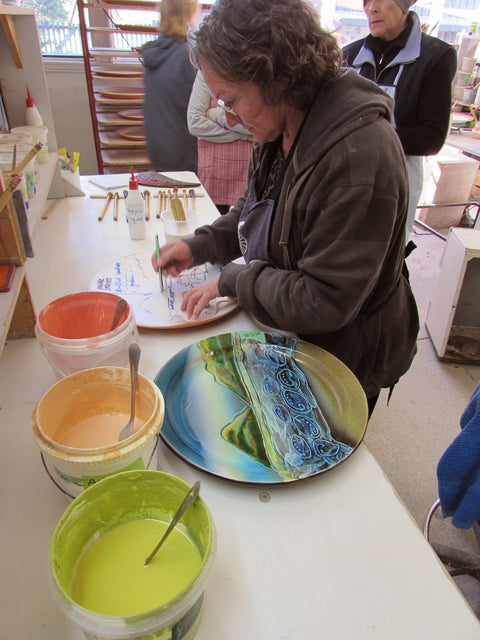

Preparing a new design for release is not quite as simple as it might seem. It takes weeks of work to finalize the appearance, and most importantly to make sure that the glazes used will give a consistent result. Glazes are not like paint; they react with each other, sometimes in unexpected ways, blend and are transformed during firing and anticipating these reactions, planning for those that are wanted and eliminating those that are not takes time. Since we have five decorators there will inevitably be subtle differences in the work, with individuals having their own 'style', manner of brush stroke, quality of line and so on.
This individual character is one of the distinctive and positive aspects of what we make, but having said that it is also important that a design stays within well defined boundaries - or work takes on a life of its own and head off in unexpected directions! To ensure this does not happen, there is a careful process of discussion and training prior to release of a new design. Templates are produced and each step documented. The sequence of application is important to achieve the desired effect, and in the case of 'Paua Coast' there are 9 individual steps, which includes 8 different hand applied glazes or 'engobe' and a further two sprayed over-glazes...so it is important to have this all carefully worked out in advance. The templates allow the decorators to efficiently transfer a pencil outline to the partially sprayed platter, over which they can step by step, paint on the glazes.
Each glaze tends to have a slightly different consistency, some remain beautifully fluid, others dry and need to be brushed out quickly. The designs often seem casual or effortless, but they are far from this and in many cases the spontaneous appearnce is the result of many hours of experimentation and refinement. Paua Coast will be added to our collection and available from mid August...if not before!
- Nick C


